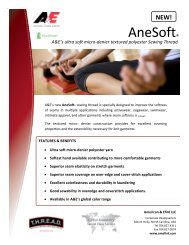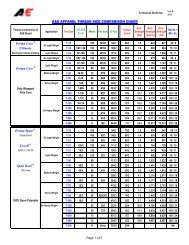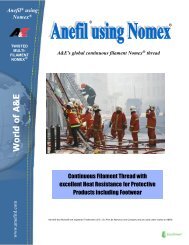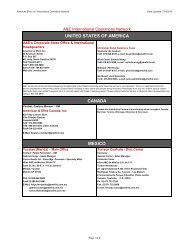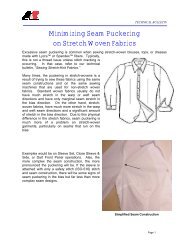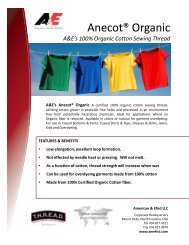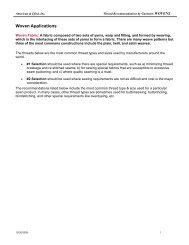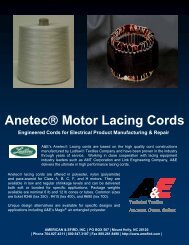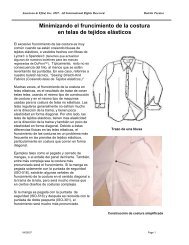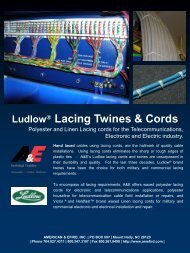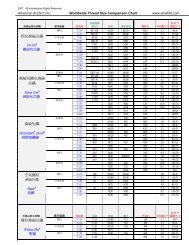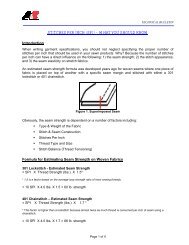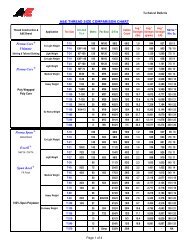Seam Engineering TB
Seam Engineering TB
Seam Engineering TB
You also want an ePaper? Increase the reach of your titles
YUMPU automatically turns print PDFs into web optimized ePapers that Google loves.
TECHNICAL BULLETINAbrasion ResistanceAbrasion resistance has always been an important factor to upholstery, footwear, and carpetmanufacturers. Recently, abrasion resistance has also become important in apparel due to thestringent laundering cycles and pre-wash processes used in garment preparation. Factors thataffect the abrasion resistance of a sewing thread in a seam include:• Fiber Type (nylon, polyester, cotton, etc.).• Fiber size and shape (denier per fil, round, trilobal, etc.).• Thread construction (monocord, corespun, spun, air entangled, etc.).• Thread size.• Stitch and seam construction.Currently, no ASTM, AATCC, or ISO abrasion test exists for evaluating the toughness of sewingthreads. However, A&E conducted comprehensive tests using a modified crockometer toachieve the following results.Thread Type / A&E Brand Tex Size Rating100% Soft Cotton: Anecot T-50 2Glaced Cotton: Anecot Glaced T-60 4Textured Polyester: Wildcat Plus T-35 4Spun Polyester: Perma Spun T-60 5Core (Cotton Wrapped): D-Core T-60 6Core (Polyester Wrapped): Perma Core T-60 7Air Entangled Polyester: Magic T-60 8Soft Poly Multi-filament: Anefil Poly STX T-45 8Bonded Poly Multi-filament: Anefil Poly BT T-45 9Bonded Nylon Multi-filament: Anefil Nylon BT T-45 10(Rated on a scale of 1 to 10 with 10 being the best.)5



